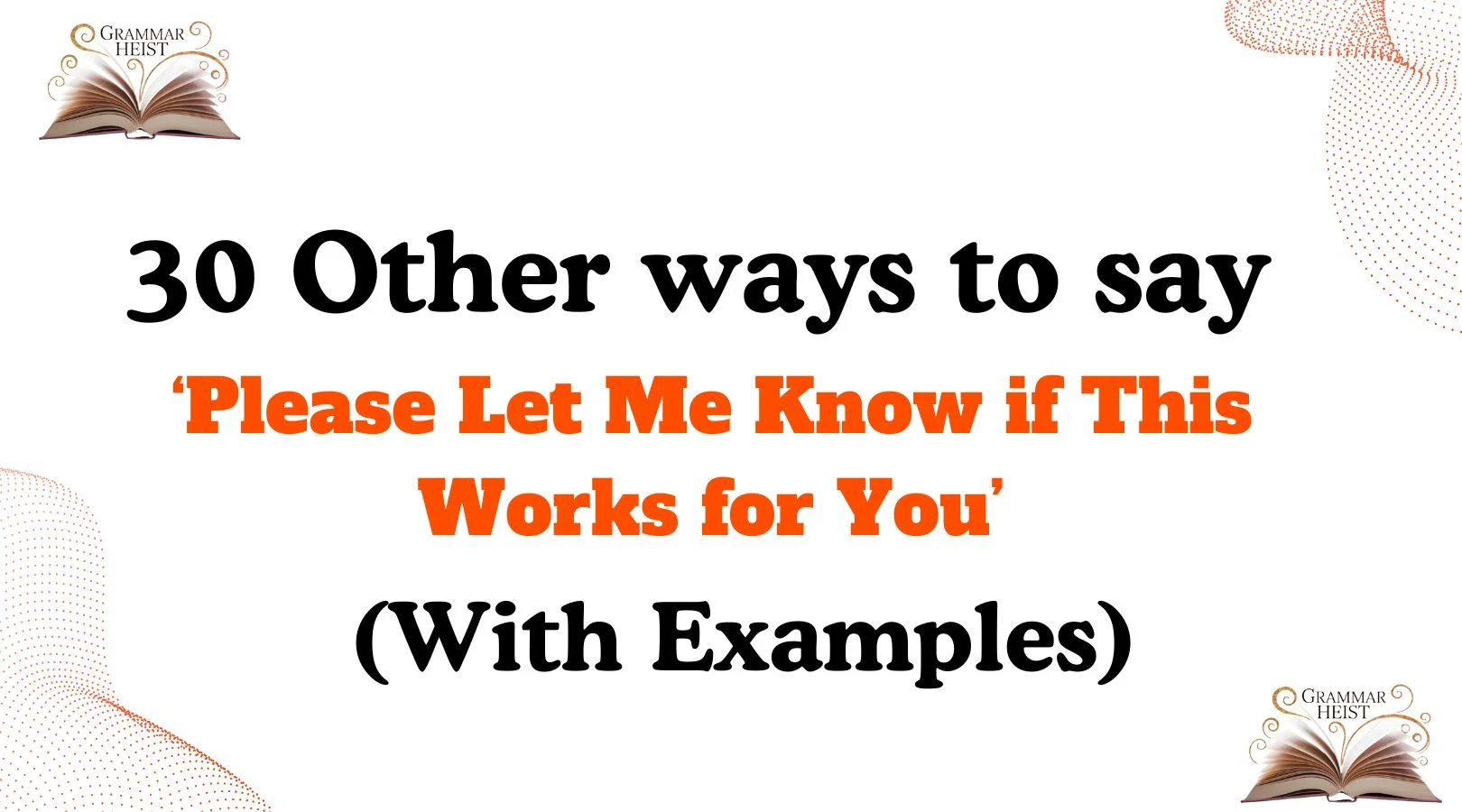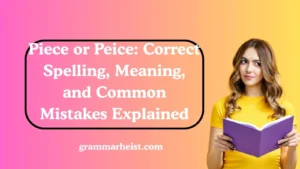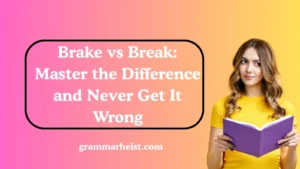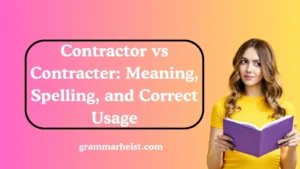Finding the right words to communicate care, respect, and understanding is an art—especially in professional or personal emails. Saying “Please let me know if this works for you” is a common phrase, but sometimes it can feel a little repetitive or too formal. Having alternative ways to express the same sentiment helps your messages feel warmer, more personal, and thoughtful, while still being clear and respectful.
In this article, you’ll discover 30 other ways to say “please let me know if this works for you”, along with examples, tone explanations, and practical scenarios. Whether you’re writing to a colleague, a client, or even a friend, these alternatives will help you sound more empathetic, professional, and approachable.
What Does “Please Let Me Know if This Works for You” Mean?
The phrase “Please let me know if this works for you” is a polite way to check if someone agrees with a plan, schedule, or idea. It’s often used in professional settings when confirming availability, seeking approval, or ensuring alignment. At its heart, it’s about making sure the other person feels included and comfortable.
Is It Professional/Polite to Say “Please Let Me Know if This Works for You”?
Yes, it is both professional and polite. However, repeating it too often might make your emails sound formulaic. That’s why using alternatives is a good idea—they can bring freshness, warmth, and a more personal touch, while still keeping your communication respectful.
Pros or Cons
Pros:
- Clear and polite.
- Works in both formal and casual settings.
- Ensures collaboration and mutual agreement.
Cons:
- Can sound repetitive if used too often.
- Might feel impersonal in friendly conversations.
- Lacks variety in tone.
Synonyms For “Please Let Me Know if This Works for You”
- Does this time work for you?
- Would this be okay with you?
- Does this sound good to you?
- Would this work for you?
- Are you comfortable with this?
- Will this work on your end?
- Does this align with your schedule?
- Are you okay with this plan?
- Would you be fine with this?
- Does this arrangement suit you?
- Will this timing work for you?
- Are you good with this?
- Will this suit your needs?
- Does this look good to you?
- Are you on board with this?
- Will this arrangement be suitable for you?
- Does this timeline work for you?
- Would you be okay with this schedule?
- Does this option suit you?
- Are you fine with this approach?
- Does this proposal work for you?
- Would this be suitable for you?
- Does this solution work for you?
- Are you happy with this?
- Does this fit into your schedule?
- Will this plan work for you?
- Are you okay moving forward with this?
- Does this arrangement work for you?
- Will this option be okay for you?
- Are you satisfied with this?
1. Does this time work for you?
Scenario: Confirming a meeting schedule.
Examples:
- “I’ve set the call for 2 PM. Does this time work for you?”
- “I’d like to meet on Friday morning. Does this work for you?”
- “I can adjust if needed—does this time work for you?”
Tone: Polite, professional, and flexible.
Explanation: This phrase is clear and respectful. It gives the other person room to confirm or suggest another time without pressure.
2. Would this be okay with you?
Scenario: Seeking gentle approval.
Examples:
- “We can finalize the design by Thursday. Would this be okay with you?”
- “I can share the draft tomorrow. Would this be okay with you?”
- “I’ll handle the report in this format—would this be okay with you?”
Tone: Soft, considerate, and collaborative.
Explanation: This phrase shows sensitivity and respect for the other person’s preferences, making it useful in teamwork or client communication.
3. Does this sound good to you?
Scenario: Checking agreement on a plan.
Examples:
- “We’ll go with the updated version. Does this sound good to you?”
- “I’ve outlined the next steps. Does this sound good to you?”
- “We’ll aim for next Monday. Does this sound good to you?”
Tone: Casual, friendly, and approachable.
Explanation: This works best in less formal contexts. It makes the conversation feel light while still confirming agreement.
4. Would this work for you?
Scenario: Proposing a plan or schedule.
Examples:
- “I’ve suggested 3 PM. Would this work for you?”
- “The delivery can be arranged on Wednesday. Would this work for you?”
- “We can finish the edits tomorrow. Would this work for you?”
Tone: Polite, professional, and adaptable.
Explanation: This option is slightly more formal than “Does this time work?” and shows readiness to adjust if needed.
5. Are you comfortable with this?
Scenario: Checking if someone is okay with a decision or arrangement.
Examples:
- “We’ll review the contract today. Are you comfortable with this?”
- “I’d like to include these points in the proposal. Are you comfortable with this?”
- “We’ll keep the same timeline. Are you comfortable with this?”
Tone: Respectful and considerate.
Explanation: This phrase acknowledges the other person’s feelings, making it suitable in sensitive or collaborative contexts.
6. Will this work on your end?
Scenario: Coordinating across teams or departments.
Examples:
- “I’ll share the files today. Will this work on your end?”
- “We’re planning a 4 PM meeting. Will this work on your end?”
- “We’ll update the software tomorrow. Will this work on your end?”
Tone: Professional and cooperative.
Explanation: It emphasizes teamwork and ensures both sides are aligned, especially useful in business communication.
7. Does this align with your schedule?
Scenario: Confirming timing with someone’s calendar.
Examples:
- “I’ve suggested Tuesday morning. Does this align with your schedule?”
- “The training session is planned for Thursday. Does this align with your schedule?”
- “We can meet after lunch. Does this align with your schedule?”
Tone: Formal and respectful.
Explanation: This shows thoughtfulness about the other person’s commitments and conveys professionalism.
8. Are you okay with this plan?
Scenario: Double-checking acceptance of a plan.
Examples:
- “We’ll send the proposal by Friday. Are you okay with this plan?”
- “I’ll prepare the draft today. Are you okay with this plan?”
- “We’ll keep the budget as it is. Are you okay with this plan?”
Tone: Friendly and considerate.
Explanation: This phrase makes the message feel collaborative, giving the other person space to agree or raise concerns.
9. Would you be fine with this?
Scenario: Asking for approval in a polite way.
Examples:
- “We’ll extend the deadline by two days. Would you be fine with this?”
- “I’ll arrange the call for Monday. Would you be fine with this?”
- “We’ll use this version of the document. Would you be fine with this?”
Tone: Soft and agreeable.
Explanation: The phrase creates a non-demanding tone, making it perfect for polite negotiation or teamwork.
10. Does this arrangement suit you?
Scenario: Discussing logistics or formal settings.
Examples:
- “We’ve scheduled the workshop for 11 AM. Does this arrangement suit you?”
- “The venue is booked for Thursday. Does this arrangement suit you?”
- “We’ll finalize the details tomorrow. Does this arrangement suit you?”
Tone: Formal and professional.
Explanation: This alternative works well in business or client interactions, sounding respectful and polished.
11. Will this timing work for you?
Scenario: Checking if a suggested meeting or call time is suitable.
Examples:
- “I’ve set the appointment for 10 AM. Will this timing work for you?”
- “The webinar is scheduled for Friday afternoon. Will this timing work for you?”
- “We can meet over lunch. Will this timing work for you?”
Tone: Professional yet approachable.
Explanation: This is a polite way to confirm availability, especially when offering a specific time slot.
12. Are you good with this?
Scenario: Casual check-in for agreement.
Examples:
- “We’ll finalize the plan by tomorrow. Are you good with this?”
- “I’ll share the updated file today. Are you good with this?”
- “We’ll move ahead with the design. Are you good with this?”
Tone: Relaxed and friendly.
Explanation: This phrase is less formal and perfect for colleagues or familiar contacts.
13. Will this suit your needs?
Scenario: Confirming if an arrangement is practical or beneficial.
Examples:
- “We’ve added extra details in the report. Will this suit your needs?”
- “The package includes additional support. Will this suit your needs?”
- “I’ll prepare a summary version too. Will this suit your needs?”
Tone: Helpful and considerate.
Explanation: This option shows that you’re putting the other person’s priorities first.
14. Does this look good to you?
Scenario: Checking if something is visually or practically acceptable.
Examples:
- “Here’s the design draft. Does this look good to you?”
- “I’ve finalized the slides. Does this look good to you?”
- “We’ll use this format for the report. Does this look good to you?”
Tone: Friendly and collaborative.
Explanation: This works well when sharing creative or approval-based tasks.
15. Are you on board with this?
Scenario: Ensuring alignment with a decision.
Examples:
- “We’ll proceed with the budget cuts. Are you on board with this?”
- “The team has agreed on this approach. Are you on board with this?”
- “We’re rolling out the update tonight. Are you on board with this?”
Tone: Supportive and team-focused.
Explanation: This phrase emphasizes cooperation and collective agreement.
16. Will this arrangement be suitable for you?
Scenario: Professional settings with formal arrangements.
Examples:
- “The interview is scheduled for Thursday morning. Will this arrangement be suitable for you?”
- “We’ll reserve the meeting room at 2 PM. Will this arrangement be suitable for you?”
- “The new schedule starts next week. Will this arrangement be suitable for you?”
Tone: Formal and respectful.
Explanation: This phrasing is courteous and works especially well in business or client communications.
17. Does this timeline work for you?
Scenario: Negotiating deadlines or schedules.
Examples:
- “The draft will be ready by Tuesday. Does this timeline work for you?”
- “We’ll complete testing next week. Does this timeline work for you?”
- “The final report will be sent by Friday. Does this timeline work for you?”
Tone: Professional and deadline-focused.
Explanation: This phrase keeps the focus on time management and project alignment.
18. Would you be okay with this schedule?
Scenario: Confirming comfort with meeting or project schedules.
Examples:
- “We’ll hold weekly check-ins. Would you be okay with this schedule?”
- “The conference is set for three days. Would you be okay with this schedule?”
- “I’ll book the slots tomorrow. Would you be okay with this schedule?”
Tone: Respectful and cooperative.
Explanation: This shows sensitivity to the other person’s availability, making it useful in collaborative projects.
19. Does this option suit you?
Scenario: Offering choices and checking if one works.
Examples:
- “We can meet at 9 or 11 AM. Does this option suit you?”
- “Here’s one version of the proposal. Does this option suit you?”
- “We can deliver it by courier. Does this option suit you?”
Tone: Neutral and professional.
Explanation: This is a versatile alternative that works in both formal and casual exchanges.
Read More:30 Other Ways to Say ‘It Was a Pleasure Meeting You’ (With Examples)
20. Are you fine with this approach?
Scenario: Checking acceptance of a chosen method or plan.
Examples:
- “We’ll test this version first. Are you fine with this approach?”
- “We’ll handle the rollout in phases. Are you fine with this approach?”
- “I’ll follow this workflow for now. Are you fine with this approach?”
Tone: Polite and thoughtful.
Explanation: This phrase is respectful and gives space for input, especially in teamwork.
21. Does this proposal work for you?
Scenario: Confirming agreement on an idea, offer, or plan.
Examples:
- “We’ve adjusted the pricing. Does this proposal work for you?”
- “Here’s the updated draft. Does this proposal work for you?”
- “We’ve outlined the new terms. Does this proposal work for you?”
Tone: Formal and professional.
Explanation: Useful for business contexts where approval is required before moving forward.
22. Would this be suitable for you?
Scenario: Offering a polite option.
Examples:
- “We can arrange delivery by Friday. Would this be suitable for you?”
- “The revised timeline is two weeks. Would this be suitable for you?”
- “We’ll use this template. Would this be suitable for you?”
Tone: Courteous and professional.
Explanation: Shows thoughtfulness and works especially well in formal communication.
23. Does this solution work for you?
Scenario: Offering a resolution to a problem.
Examples:
- “We’ve added an extra feature. Does this solution work for you?”
- “We’ll extend support by two months. Does this solution work for you?”
- “We’ll provide a replacement. Does this solution work for you?”
Tone: Problem-solving and supportive.
Explanation: Great when trying to resolve issues or provide alternatives.
24. Are you happy with this?
Scenario: Checking satisfaction in a friendly way.
Examples:
- “Here’s the final draft. Are you happy with this?”
- “We’ve completed the changes. Are you happy with this?”
- “This is the agreed timeline. Are you happy with this?”
Tone: Friendly and conversational.
Explanation: Makes communication feel warm and approachable, good for casual or semi-formal settings.
25. Does this fit into your schedule?
Scenario: Confirming timing with someone’s availability.
Examples:
- “The call is set for 3 PM. Does this fit into your schedule?”
- “We’d like to meet on Monday. Does this fit into your schedule?”
- “The training is planned for Thursday. Does this fit into your schedule?”
Tone: Professional and considerate.
Explanation: Shows awareness of the other person’s commitments and time.
26. Will this plan work for you?
Scenario: Aligning on an agreed course of action.
Examples:
- “We’ll start testing next week. Will this plan work for you?”
- “The marketing campaign launches on Friday. Will this plan work for you?”
- “We’ll assign tasks this way. Will this plan work for you?”
Tone: Professional and cooperative.
Explanation: Good for team environments where alignment on a strategy is needed.
27. Are you okay moving forward with this?
Scenario: Seeking approval before proceeding.
Examples:
- “We’re ready to finalize the design. Are you okay moving forward with this?”
- “I’ll confirm the order now. Are you okay moving forward with this?”
- “We’ll lock in the dates. Are you okay moving forward with this?”
Tone: Respectful and collaborative.
Explanation: Encourages open dialogue while still aiming to proceed.
28. Does this arrangement work for you?
Scenario: Checking if logistics or setups are acceptable.
Examples:
- “The seating plan is ready. Does this arrangement work for you?”
- “We’ll organize delivery this way. Does this arrangement work for you?”
- “We’ll follow this order. Does this arrangement work for you?”
Tone: Polite and practical.
Explanation: Works best for discussing formal setups or organized tasks.
29. Will this option be okay for you?
Scenario: Offering a choice or alternative.
Examples:
- “We’ll ship it by courier. Will this option be okay for you?”
- “We can book a later time. Will this option be okay for you?”
- “This plan saves more budget. Will this option be okay for you?”
Tone: Considerate and cooperative.
Explanation: A softer way to suggest an alternative, leaving space for the other person’s input.
30. Are you satisfied with this?
Scenario: Checking if expectations are met.
Examples:
- “We’ve added your requested changes. Are you satisfied with this?”
- “Here’s the new version. Are you satisfied with this?”
- “The team has implemented the updates. Are you satisfied with this?”
Tone: Professional and thoughtful.
Explanation: This phrase is useful when final confirmation is needed, especially after adjustments.
Conclusion
Finding the right words matters. Instead of always saying “Please let me know if this works for you,” you now have 30 thoughtful alternatives. Each one adds variety and warmth, while still keeping your message clear and respectful. Use these phrases to sound more natural, professional, and caring in your communication.

Mia Rose is a skilled language expert with a deep passion for helping individuals master the art of writing and communication. With years of experience in the field, Marie brings a thoughtful and tailored approach to grammar, style, and language improvement. Her goal is to empower others to express themselves with clarity, precision, and confidence in every written word.













